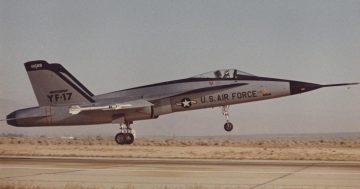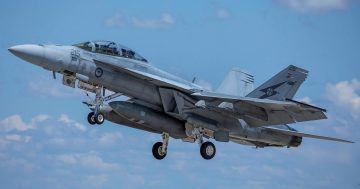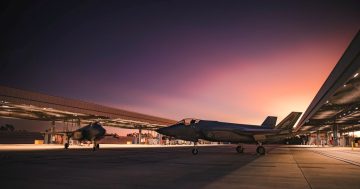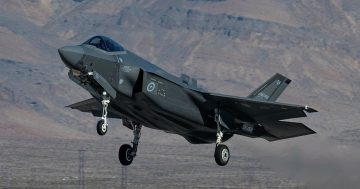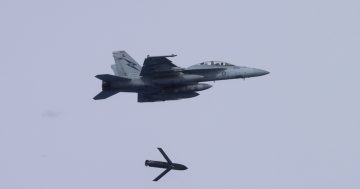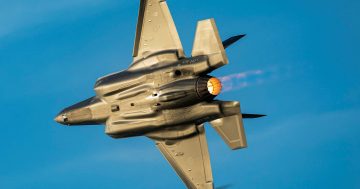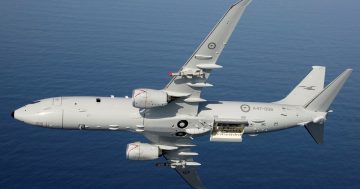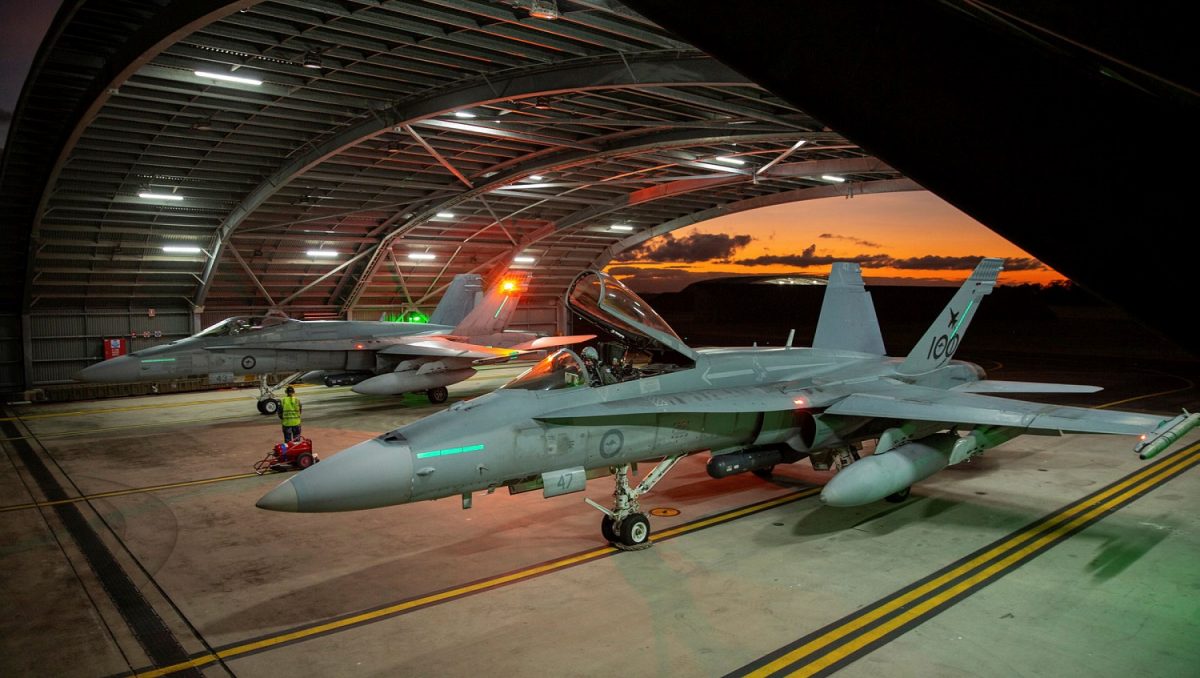
Two of the RAAF’s last squadron of Hornets take part in Exercise Talisman Saber in mid-2021. Photo: ADF.
I read with interest a report in the 6 June Australian Financial Review (AFR) that some of the Royal Australian Air Force’s retired F/A-18A/B Hornet fighters might be headed to Ukraine.
This is not a new idea. It initially appeared to come from enthusiasts’ Twitter feeds and websites last year when the idea of transferring F-16 fighters to Ukraine from former European NATO countries’ stocks was first mooted, and it popped up again earlier this year.
While there are likely more used F-16s available, elements in the enthusiast community suggest the F/A-18 might be a better solution because it’s a more rugged design better suited to dispersed and austere airfields as Ukraine is currently being forced to do. The Hornet is also considered a better ‘all-round’ airplane and easier for training pilots and maintainers than the more ‘highly-strung’ F-16.
So has commentary on the Twitter-verse gained so much traction it is now filtering into mainstream media?
That said, the two writers of the AFR report – Phil Coorey and Andrew Tillet – are impeccably credentialled and respected journalists, so there is likely something to the story.
I am neither an engineer nor a pilot. Nor do I have primary-source knowledge of the conditions in which the approximately 40 remaining Hornets are currently being stored.
Region asked the ADF if it could comment on the current state of the retired Hornets, and received the following response: “The RAAF fleet of 71 F/A-18A/B Classic Hornet aircraft, associated spares and support equipment was progressively withdrawn from service from January 2019 to December 2021. Due to commercial-in-confidence considerations, no additional information can be provided on the commercial arrangements for the aircraft.”
The last squadron of RAAF F/A-18A/Bs was retired in late 2021, while the other three squadrons handed back their jets in 2017, 2018, and 2020 in favour of new F-35As.
As far back as late 2019 when about half the RAAF’s fleet had already been retired, I saw at least a dozen of the jets crowded tightly together under the old ‘carport’ shelters but otherwise out in the open at RAAF Williamtown. Even then, many had already been stripped of control surfaces, engines, panels and other components to keep the remaining jets flying.
From early 2019, Australia handed over at least 20 Hornets to Canada which still flies the similar CF-18A/B model to augment that fleet until its replacement enters service. A large cache of spares, including engines, was reportedly part of that deal. These jets were carefully hand-picked based on their maintenance records and remaining fatigue life. There have also been reports Malaysia took some of the RAAF’s spares stocks to help keep its small fleet of eight F/A-18D Hornets flying.
Of the 75 Hornets the RAAF acquired, four crashed in service, 11 have been allocated to museums including the Australian War Memorial, plus the 20 that went to Canada. A deal mooted in 2020 to sell the remaining 40 Hornets to RAVN Aerospace (formerly called Air USA) has likely fallen through because that company failed to win a large US Air Force contract in 2021 to provide airborne adversary training services.
RAVN Aerospace has reportedly paid a deposit for the Hornets, so currently has the purchase rights to the jets. Instead of operating them itself, the company may be looking to act as an intermediatory to pass them on to Ukraine. But, in line with the US’s International Trafficking in Arms Regulations (ITARS), such a move would require approval from the US Government.
The AFR report states: “An Australian security expert advising the Ukrainian government confirmed negotiations were underway, but a specific deal is yet to be finalised.” It also quotes another source saying the “perfectly good aircraft” could be made “operational within four months”.
The term “perfectly good” is likely a theoretical one. When withdrawn from service, the Hornet was still a very capable fighter, but most of the airframes delivered between 1984 and 1991 were worn out. The RAAF and its industry partner, Boeing, carefully conducted scheduled maintenance on the jets in their last few years with their specific withdrawal dates in mind. The last ‘deep maintenance’ of an RAAF Hornet was conducted in June 2020. Plus, the best 20 have already gone to Canada.
While the remaining jets may theoretically have a couple of years’ service life left in them, that they could be made “operational within four months” appears to be wildly optimistic.
There is also no workforce in place to perform this work. The RAAF maintainers and engineers at Williamtown have been transferred to the new F-35A, while the Boeing workforce has dispersed, moving on to other aircraft or companies.
The small Boeing team that prepared the 11 museum Hornets did so at a relatively slow pace over a number of years. But making four jets operational in four months –let alone 40 – would require a much larger workforce and spares holding.
One way to re-generate the Hornets could be to transfer them to the US Marine Corps or a European operator such as Spain, Switzerland, or Finland – which continue to operate them and have maintenance workforces in place – prior to delivery to Ukraine. But none of this will happen quickly.
Australia has come under increasing pressure from Ukraine to ramp up its donation of weapons systems and support to aid its war against Russia, and there are reports Prime Minister Anthony Albanese may be preparing a major announcement at July’s NATO Summit in Lithuania.
There’s no doubt Ukraine needs to bolster its dwindling air combat capabilities, but I’m just not convinced former RAAF Hornets are the best option.
Original Article published by Andrew McLaughlin on Riotact.


